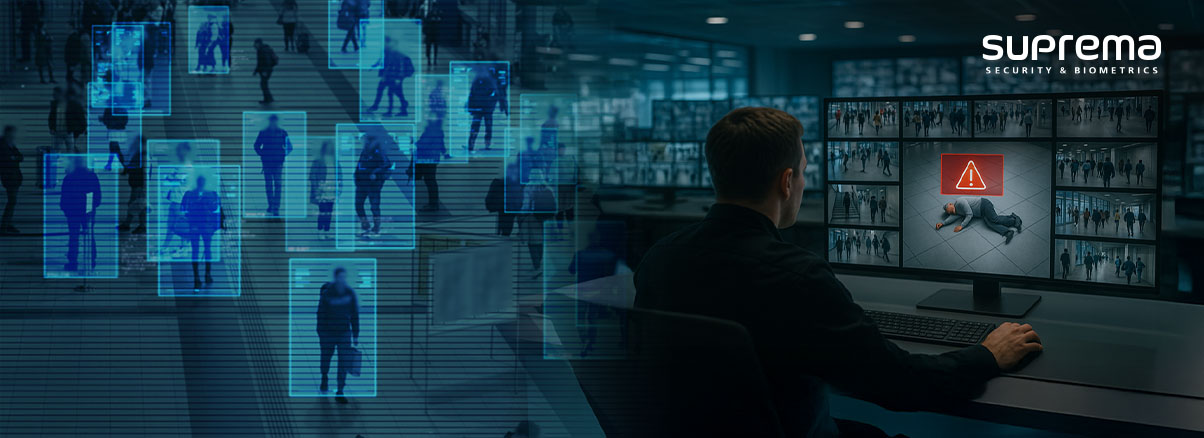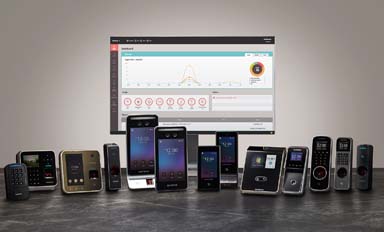SUPREMA
- Actualités
- Derniers communiqués de presse de Suprema

From bustling office lobbies to crowded retail centers and high-security residential zones, mixed-use developments pose a significant challenge for security management. The complexity of ensuring safety across diverse spaces requires an intelligent and adaptable approach - one that AI-driven video analytics and smart access control solutions are increasingly providing.
With advanced anomaly detection, real-time monitoring, and mobile-based access control, security operations are becoming more proactive and efficient. Businesses and property managers are leveraging these technologies to optimize security while improving the overall experience for tenants, employees, and visitors.
Industry experts highlight how AI-powered security systems are reshaping safety measures, enhancing operational efficiency, and minimizing risks in large-scale developments. This article explores how AI-driven video analytics, biometric authentication, and cloud-based access control are driving the future of security in mixed-use environments.
AI-driven video and audio analytics for security monitoring
The integration of AI-powered video and audio analytics is transforming security operations in mixed-use developments, providing real-time monitoring and improving response efficiency.
Justin Kumulia, Business Development Manager for Intercoms and Access Control for APAC at Axis Communications, explains how AI can automate threat detection and optimize security workflows.
“AI-powered video and audio analytics help streamline security by detecting anomalies, analyzing crowd movements, and providing real-time alerts,” Kumulia says.
Anomaly detection is a key feature that enhances security by identifying unusual behaviors. AI systems can recognize behaviors such as loitering, tailgating, or disruptive noises. “For example, in a shopping mall, AI can detect someone lingering near emergency exits and immediately alert security to prevent potential threats,” he explains.
Crowd intelligence plays a crucial role in managing high-traffic areas, particularly during peak hours or events. AI monitors crowd density and movement, sending alerts if congestion reaches unsafe levels.
“During events, it monitors foot traffic and notifies management if crowds become too dense, allowing for proactive measures to prevent congestion,” Kumulia adds.
Additionally, AI enables real-time alerts that enhance security response. “In office lobbies, AI can identify unauthorized access or disturbances, alerting security teams instantly, enabling quick intervention and maintaining safety without constant manual monitoring,” he says.
The combination of anomaly detection, crowd intelligence, and real-time alerts helps reduce false alarms, improve incident response times, and optimize resource allocation, ensuring a safer environment for tenants and visitors alike.
Smart access control and mobile credentials
Beyond surveillance, smart access control systems are becoming integral to securing mixed-use developments. Mobile credentials and biometric authentication are replacing traditional access control methods, providing increased security and operational efficiency.
Suprema CEO Hanchul Kim highlights the benefits of implementing a flexible and dynamic access control system. “Implementing Suprema’s new BioStar in mixed-use settings offers a comprehensive suite of access control features that enhance both operational efficiency and security,” he says.
Kim explains that the system supports video surveillance, multi-factor authentication (MFA), zoning, visitor management, and membership management, reducing the need for extensive security personnel.
“Its flexibility allows for tailored security measures across different areas—high-security zones like data center rooms can implement MFA and strict zoning, while visitor areas can utilize streamlined self-enrollment processes with access granted via email,” he notes.
Suprema’s mobile credential technology eliminates the need for physical access cards, reducing administrative overhead.
“Access authority can be remotely assigned, modified, or revoked in real-time, closing security gaps that often exist with physical credentials when tenants leave or employment status changes,” Kim adds.
In mixed-use environments, where tenant turnover is frequent, this dynamic credential management is particularly valuable.
Another advantage is the scalability of these systems. Property managers can apply different levels of security based on the function of each space. High-risk areas such as financial offices or healthcare facilities may require multiple authentication factors, while common areas can have more seamless access for residents and visitors.
Multi-factor authentication and cloud-based access control
Prabhuraj Patil, Senior Director of Physical Access Control Solutions for ASEAN and India at HID, echoes the significance of integrating smart access control with mobile and biometric authentication.
“Smart access control technology is revolutionizing security and operational efficiency in mixed-use developments by providing seamless, scalable, and highly secure solutions tailored to the needs of diverse user groups,” he says.
One of the key advantages of mobile credentials is their ability to enhance security through encryption and secure storage on users’ smartphones. Unlike traditional access cards, which can be lost, stolen, or cloned, mobile credentials significantly reduce the risk of unauthorized access.
“Integrating mobile credentials with biometric authentication (such as fingerprint or facial recognition) offers multi-factor authentication (MFA), which adds an extra layer of security to ensure that only authorized individuals can access specific areas,” Patil explains.
Cloud-based access control platforms further improve security by allowing real-time modifications of access privileges.
“Property managers can grant, revoke, or modify access privileges instantly, minimizing security vulnerabilities from lost or outdated credentials,” he says.
Additionally, smart access control systems integrate seamlessly with digital visitor management platforms, providing temporary credentials to guests and service providers.
“This reduces reliance on physical passes and improves security oversight,” Patil notes.
Cloud-based solutions also ensure continuity of access even in emergency situations. In the event of a power failure or network disruption, cloud-enabled security systems allow administrators to maintain control over access permissions remotely.
This reduces the risk of security lapses and helps maintain order in large-scale developments where security operations cannot afford downtime.
Another growing trend is the use of AI-driven behavioral analytics in access control. By analyzing user patterns, AI can detect irregular access attempts, flagging potential security threats before they escalate.
AI-powered access control systems can even automate response actions, such as triggering alerts or temporarily restricting access to a suspicious individual until further verification is conducted.
The future of AI-powered security in mixed-use developments
As mixed-use developments continue to expand, the role of AI-driven video analytics and smart access control solutions will become even more critical.
The ability to detect anomalies, manage crowds, and enhance access control security through mobile credentials and biometric authentication is shaping the future of security operations.
Industry experts agree that AI-powered security not only improves safety but also enhances operational efficiency by reducing reliance on manual monitoring and physical access credentials. By leveraging AI and cloud-based access control, property managers can ensure robust security measures while adapting to the evolving needs of tenants and visitors.
Moreover, future advancements in AI and IoT (Internet of Things) are expected to bring even more sophisticated security capabilities. Integrated security ecosystems that combine AI-powered surveillance, smart locks, and mobile authentication could provide a seamless and automated security experience across mixed-use properties.
The use of predictive analytics in security management is also gaining traction. By analyzing historical data, AI systems can anticipate security threats and suggest preemptive measures. For instance, if an AI system detects a rise in unauthorized access attempts in a specific area, security managers can preemptively increase monitoring or adjust access control policies to prevent breaches.
With technological advancements in AI, biometrics, and mobile authentication, mixed-use developments are poised to become safer, more efficient, and better equipped to handle security challenges in the years to come.
Source: asmag













